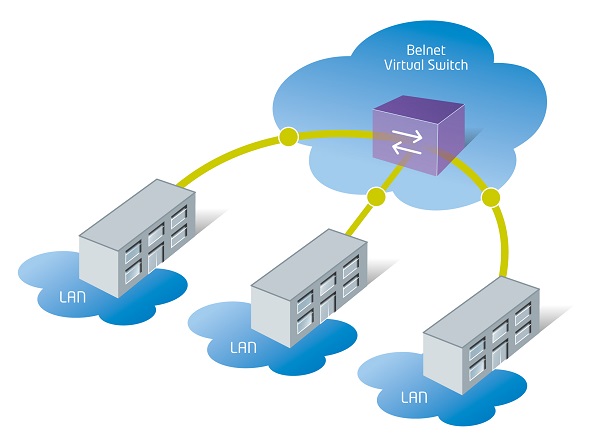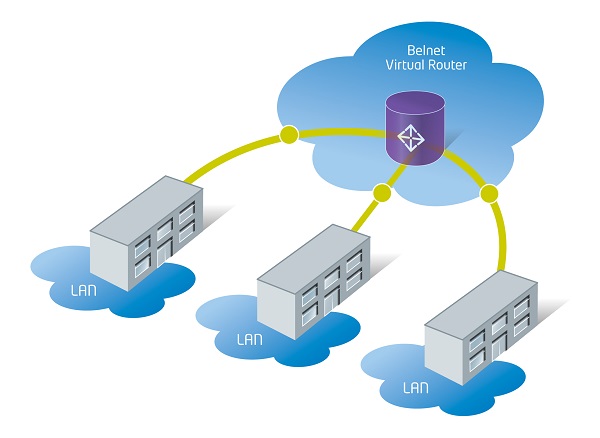What is the Multipoint service?
What are the two types of Multipoint?
What are the differences between a Belnet virtual switch and a Belnet virtual router?
How many LAN’s can I interconnect thanks to Multipoint service?
Is there a bandwidth limit with Multipoint?
How can I monitor my Multipoint connection?
Do Media Transport Service and International connectivity need the Multipoint?
Implementation:
In which cases is Belnet involved in the implementation of my interconnections?
What are the conditions for implementing a redundancy connection on my interconnections?
When do I need a Belnet Leased Line in order to set-up a Multipoint?
What is the Multipoint service?
Thanks to Multipoint Service, affiliated organisations can interconnect two or more geographically dispersed sites. The service can be used from 2 points and delivered on a dedicated interface (port-based) or on a VLAN (VLAN-based).
Depending on the required bandwidth, quality guarantees and access circuit(s), Belnet has different technologies at its disposal to implement a connection adapted to your needs.
What are the two types of Multipoint?
There are 2 types of Multipoint:
- Layer 2 Multipoint
Those that use the Belnet network to simulate a switch on your organizations’s WAN. You are responsible for routing between the LAN’s. As a vpls on the IP network or as an E-LAN on the Ciena network.

- Layer 3 Multipoint
Uses the Belnet network to simulate a router on the customer’s WAN. Belnet is responsible for routing between the LAN’s.

What are the differences between a Belnet virtual switch and a Belnet virtual router?
The difference between the layer 2 and layer 3 is in the type of packets exchanged:
- Layer 3 (router) allows us to route the packets with knowledge of the IP range of the different parties involved.
- Layer 2 (switch) simply transports frames from one side to the others, without any “intelligent” decisions.
Troubleshooting a Layer 3 is always easier.
How many LAN’s can I interconnect thanks to Multipoint service?
There is no real limitation, we have created WANs for some of our customer with more than 20 sites.
Is there a bandwidth limit with Multipoint?
We are limited by the capacity of your physical link. We can deploy L2 multipoint directly on our optical backbone to bandwidth up to 10 or 100 Gbit/s (if you are present in our PoP).
How can I monitor my Multipoint connection?
Through the Belnet portal, you will have access to the bandwidth usage of you services.
Do a Media Transport Service and International connectivity need the Multipoint?
A Media Transport Service can work without Multipoint service, but you will have to pass through your internet security devices on both sites.
If you use a multipoint, the packets will be routed in your own network, improving the response time.
International connectivity is one of the Multipoint service with GEANT and with another NREN abroad.
In which cases is Belnet involved in the implementation of my interconnections?
If you have more than 1 site connected to a Belnet PoP, we can interconnect them with Multipoint service.
What are the conditions for implementing a redundancy connection on my interconnections?
If your sites are connected to more than one PoP, we can create Multipoint with different paths to assure redundancy. Layer 3 Multipoint, can be rerouted over our network in the case of failure on one of our lines on the backbone.
When do I need a Belnet Leased Line in order to set-up a Multipoint?
A Belnet Leased Line is not compulsory for the multipoint service:
- If you are present in one of our PoPs, you can benefit from the service directly on our core routers.
- If you use a third-party provider for the last mile, the service can be delivered as a new VLAN on the line (if the physical bandwidth is high enough).
If you use a third-party provider for the last mile, the service can be delivered as a new VLAN on the line (if the physical bandwidth is high enough).